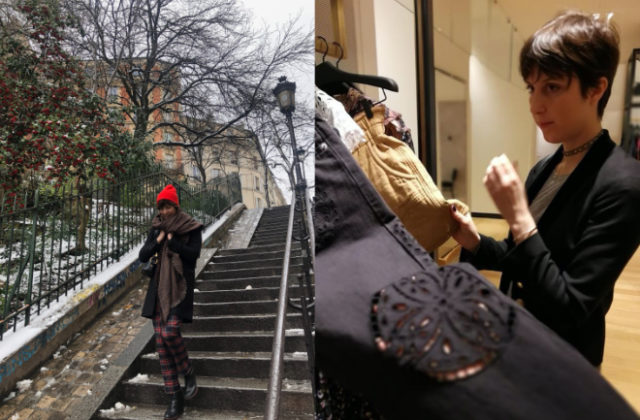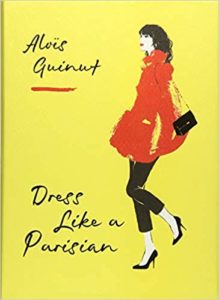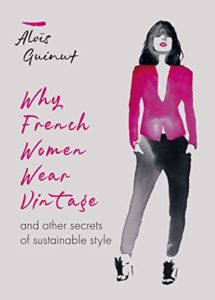Shall I still buy on sales?
In Paris, sales started last Wednesday for a full month.
In France, shops can only go on sales for a certain period of time and do so all together twice a year at the end of the season to clear up what hasn’t yet been sold full price.
There are no year-round sales… well that’s theory since nowadays, in fact, most shops are doing “private sales” all year round for “their clients”. Truth is, those couldn’t be less private as the salespersons will let everyone who enters the shop know about the current “private offer” (to be precise, they will whisper it to give you a sense of exclusivity).
As a result, the big excitement about the sales times has dropped as it feels like discounts are going on all the time. It’s like when you start selling Christmas items as soon as Halloween is over. Kind of kills the vibe.
Anyway, this sounds like it has nothing to do with my title, isn’t it? It actually does.
The purpose of sales used to be clearance clearance. They have partially become a mere marketing technique to attract clients in the shop and trick them into buying stuff they do not need.
In recent years, increased awareness for environmental issues has risen another concern.
Since sales are lurking people into buying more stuff, aren’t they against the environment?
It depends if you are the brand or the buyer.
I/ Is selling products on sales an anti-environmental behavior for brands?
A/ Timeless items do not go on sale, sales are based on the trend turnover craze
Items that go on sales are mostly seasonal.
You’ll also find basics that aren’t flawless: they may have been overpriced or are a divisive design.
Therefore, the bigger the proportion of discounted items amongst a collection is, the bigger the amount of unnecessary items produced by the brand is.
Perfectly priced items that will be worn for the next years aren’t supposed to need a discount.
B/ As every product can’t encounter success, sales are necessary for brands
Even the best of brands, with the most thoughtful team will generate leftovers.
Of course, it’s up to designers, marketers and sustainability managers to try to minimize the products fails but not every item produced by a brand may encounter success amongst customers.
Sales are here to get rid of those less attractive items instead of dumping them in the trash.
It’s a necessary evil but it should be lessened as much as possible.
C/ Creating a “no sales” business model forces brands to step up their game
Some sustainable clothing brands are now relying on a “no sales” business model that mathematically enhances the design, quality, and pricing of their products.
There is no room for failure: everything shall be sold. Therefore everything has to be perfect.
Environmentally speaking, this is ideal.
In terms of pricing too: as the margin does not include a possible discount, prices are lower all year long.
Fashionably and technically speaking, this is trickier.
It implies to create only non-divisive products that will please a vast number of customers.
Yet every design implies a risk of failure.
The creative ones even more than the basic ones.
A fashion without sales would be very plain. Which would be good for the environment don’t get me wrong, but would not be fashion anymore.
I think the world is not yet ready to get rid of fashion.
In my opinion, the best, as a brand, is to try to avoid sales as much as possible but use them when needed.
Most importantly, the production process shall be virtuous and so shall be the end of life of the products (since for some luxury brands, no sales policy used to mean burn the leftovers!).
D/ Using sales as a mere marketing bait instead of its original clearance purpose is anti-environmental
Did you know that some brands produced more for sales events? The purpose of clearance is lost!
II/ Is buying products on sale an anti-environmental behavior for customers?
A/ When you need to buy something it won’t change anything whether you buy it on sales or not
We live in a world where there are discounts so I see no harm in taking advantage of them.
Let’s say you need a coat but find the full-priced expensive. You may as well wait for a discount to buy what you are interested in.
In one way, it may even make you do wiser choices.
Instead of impulse buying cheap products, you create a list of higher-end products to shop on sales.
The waiting time will refine your list leading you to make the best choices.
B/ Since sales are necessary for business, buying discounted products is like buying milk before it turns bad (but when it still is good!)
As I explained, on the brand’s end, it is next to impossible to not generate any leftovers at all.
Sales are originally meant to get rid of those.
But it does not mean that the leftovers are bad.
It just means that other customers have not been able to see their full potential.
But my fashion-wise readers may be able to do so.
There are diamonds in the rough amongst discounted garments.
C/ Choosing not to buy on sales will force the brands to step up their game
I know… it kinds of contradicts my first point, but the “no-sales” movement is pressuring brands to do wiser choices from the conception on and no to rely on these marketing events for their business.
Which is an excellent thing!
It will make sales go back to what they used to be: a necessary clearance for just a few collection leftovers
D/ As long as you do not buy products BECAUSE they are on sale it’s fine
There will be many odd items amongst the discounted.
When you can master and wear them, go for it, but do never buy anything for the sake of a good deal.
A purchase you won’t wear always is a bad choice.
Voilà! So if you want me to help you find diamonds during the sales (or at other times of the year), let me know!
And you? What is your opinion on buying discounted clothes?
Collage de couverture: my red beanie, my bought on sales Darel pants and me considering some Marant clothes




I love the way you turn the issue over and look at it from different angles, giving a well-thought-through response. I’m particularly drawn to the last point–not buying at item just BECAUSE it’s on sale, which can lead to having wonky duds in the back of your closet that never get worn (she says, speaking from experience). I think the relationship between cost and decision should be reversed–decide if the item is something you want to buy before glancing at the price. The price might mean you decide not to get it, but at least you’ve decided you really want it already.
I love that you’re back, Alois!
SO happy you are back as I always enjoy reading your posts. Is that you in the photo above on the right?
Yes it’s me 🙂
Two years ago with short hair.
SO happy you are back as I always enjoy reading your posts. Is that you in the photo above on the right? I would love to see posts featuring short haircuts, or about how more mature women who happen to have short hair can style their clothes.
The key to short hair, whether old or young is earrings!
Small, big…
If they are big and your lobe is stretched use a earring shape that covers it!
Mrci pour ce décrytage remarquable du fonctionnement des soldes côté milieu de la mode/des affaires et côté consommateur.
Justement, c’est du côté des consommateurs que viendra le changement. Si nous refusons collectivement d’accepter le bâclé, le pas cher (mais qui, de toute façon, ne vaut rien), je suis persuadée que les lignes vont changer.
A NOUS DE JOUER….
Oui!
Living in the US, sales are definitely a constant temptation, although we see increases leading up to the holidays, and in January particularly, when things hit rock bottom prices before stores have to pay an inventory tax. I like the perspective that the best items should never go on sale, because they are so perfect. I was also horrified to discover that some of the high-end brands destroy unsold merchandise. We all need to be more environmentally conscious about the high environmental cost of fashion – which is another reason why style is so much better than fashion. And I would love to see some of your picks – what do you think is worthy of purchase during the sales?
It’s a good idea but recommendations for sales are hard since my readers are spread over the world.
I shop sales in the stores and on-line. You just need to be very selective – favorite colors, shapes, pieces. Only things that make you feel great, fill your wardrobe’ holes and in your budget. Living in US means seeing sales almost year around – so discipline is required.
Selection is key you are right
Très bon article qui a le mérite d’analyser les soldes dans son contexte entier (business, impact écologique).
Je fais les soldes pour m’acheter de bons basiques de qualité repérés depuis un certain temps mais trop chers.
Sinon, je préfère acheter d’occasion sur vinted ou en dépôt vente.
Je pense que globalement les marques produisent beaucoup trop de vêtements.
Avant l’arrivée de la fast fashion, nous étions habitués à deux collections par an ce qui nous laissait le temps d’essayer, de réfléchir et d’attendre.
Or, Sézane lance de nouvelles pièces tous les mois ce qui relance la machine de l’immédiateté.
On veut tout et tout de suite.
Le désir est à présent court termiste. Ce n’est désirable que parce que c’est nouveau.
Cette course est sans fin et joue sur notre frustation de laisser la belle pièce mise en valeur sur les réseaux sociaux.
Il est de la responsabilité du consommateur de dire stop, je n’ai pas besoin de pièces que je ne porte pas et je n’ai pas besoin de renouveler ma garde robe tous les mois.
Mais les marques doivent cesser d’utiliser les réseaux sociaux et autre médium de communication pour nous appater sans cesse.
Oui, il faut se detacher du FOMO de la belle pièce.